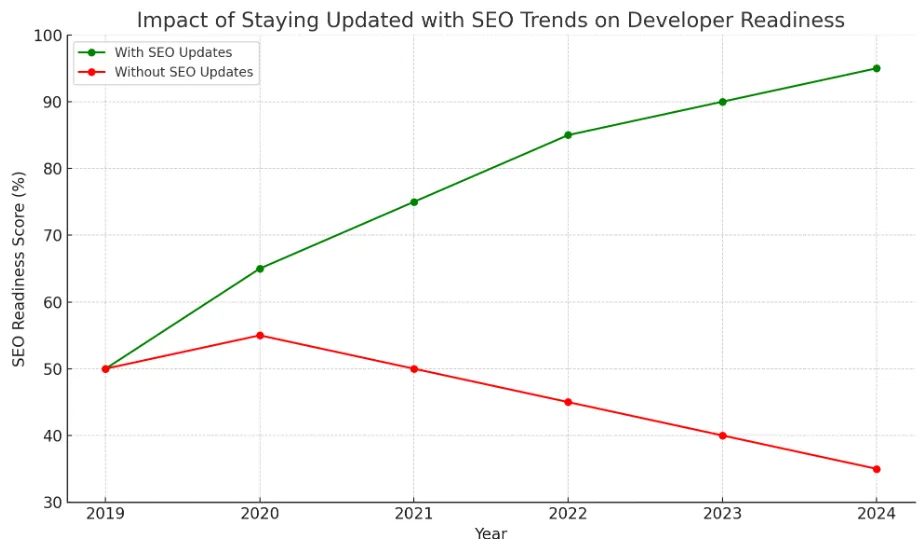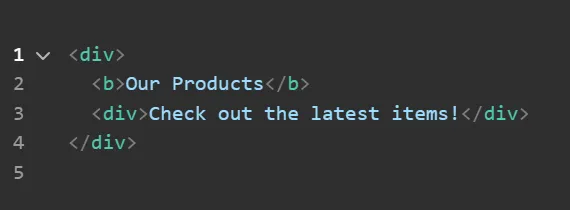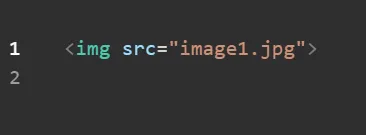Introduction to SEO in Web Development
Why Developers Should Care About SEO
Let’s face it—SEO isn’t just for marketers—it starts with developers. If your code is messy, inaccessible, or poorly structured, search engines may never rank your content, no matter how good it is.
Building with SEO friendly code boosts visibility, indexing speed, and user experience. Your code is the foundation—if it’s weak, the site suffers.
Moreover, SEO friendly code lowers bounce rates, improves performance, and drives conversions—directly supporting higher rankings. So yes, SEO is part of your job.
Looking to build a site that ranks and converts?
Contact 27 DIGI for SEO-first Web development to get a quote.
The Relationship Between Code and Search Rankings

1. Search engines read code, not how a site looks.
2. Semantic HTML (like <article>, <nav>, <section>) adds meaning to content.
3. Clean structure helps Google understand relevance and hierarchy.
4. Two pages can look identical, but the one with better code ranks higher.
The Key Benefits of SEO Friendly Code
There’s more to SEO friendly code than just rankings. Here are a few powerful benefits:
1. Improved Crawling and Indexing: Search engines can read and understand your site faster.
2. Faster Load Times: Clean code minimizes unnecessary HTTP requests and enhances page speed.
3. Mobile Optimization: Responsive design and structured layouts boost mobile friendliness.
4. Enhanced Accessibility: Semantic HTML improves screen reader experiences and usability.
5. Better User Experience: Cleaner code results in smoother navigation and faster interaction.
6. Higher Conversion Rates: SEO friendly sites tend to keep users longer, leading to better conversion metrics.
Structuring Your HTML for SEO

Importance of Semantic HTML Tags
Semantic HTML is key here. Tags like <header>, <footer>, and <article> clarify content meaning for both browsers and search engines, unlike generic <div> tags.
Why does this matter? Semantic HTML matters because it gives search engines context, helping them distinguish between content, navigation, and support info, improving indexing and prioritization.
It’s also a core part of SEO-friendly code, as AI and machine learning continue to reward structured markup. Using semantic tags isn’t just good SEO—it’s smart coding.
At 27 DIGI, we build every website with SEO best practices baked into the code from day one. Explore our SEO-optimized web development services.
Optimizing Site Architecture
Clean URL Structure
A good URL is short, clear, and keyword-rich. Use hyphens, not underscores, and avoid IDs or long parameters. Clean URLs improve both SEO and user experience.
For example:
- Good: example.com/laptops/macbook-pro-2024
- Bad: example.com/product/12345?id=abc
Technical SEO Essentials for Developers
| Aspect | SEO Best Practices |
| Mobile Responsiveness | Ensure your site is mobile-friendly |
| (Google uses mobile-first indexing). | |
| Use CSS media queries and flexible layouts.Avoid fixed-width elements. | |
| Test across multiple devices, even with frameworks like Bootstrap or Tailwind. | |
| Page Speed | Use Google PageSpeed Insights to identify slowdowns. |
| Compress images (e.g., WebP). | |
| Minify CSS/JS files.Defer non-critical scripts. | |
| Enable lazy loading. | |
| Schema Markup | Add structured data using JSON-LD. |
| Highlight key elements (products, reviews, events). | |
| Use Google’s Markup Helper. | |
| Validate with the Rich Results Test. | |
| Canonical Tags & Duplicates | Avoid duplicate content issues. |
| Use canonical tags to define the preferred page version: <link rel=”canonical” href=”example.com/products/item123″> | |
| Consolidate link equity and improve rankings. |

JavaScript and SEO
How Search Engines Handle JavaScript
1. JavaScript adds interactivity but can hinder SEO.
2. Google handles JavaScript better, but smaller engines may miss key content.
3. Avoid hiding important elements in scripts to maintain SEO friendly code.
4. Use SSR or SSG for critical pages, especially SPAs.
5. Frameworks like Next.js and Nuxt.js enable SSR.
6. Simpler projects should focus on progressive enhancement for accessibility, even if scripts fail.
Progressive Enhancement and Server-Side Rendering
1. Progressive enhancement starts with HTML and CSS, adding JavaScript later for accessibility.
2. SSR serves a fully rendered page, making it easier for search engines to crawl.
3. For content-heavy sites, use SSR or tools like Prerender.io to ensure content is accessible to bots.
CSS and SEO
Optimizing CSS for Faster Load Times
1. Impact on SEO: Large CSS files, unused selectors, and non-minified styles slow down your site and hurt rankings—undermining SEO friendly code practices.
2. Optimization Tips:
- Remove unused CSS using tools like PurifyCSS.
- Minify styles with CSSNano.
- Avoid blocking rendering by loading non-critical styles asynchronously.
- Limit inline styles to reduce HTML bloat.
3. Benefits: Clean CSS supports SEO friendly code, leading to faster load times, better performance, and improved user experience.
SEO Friendly Images and Media
| Optimization Area | Best Practices |
| Alt Attributes & Image Optimization | Use descriptive alt text (e.g., alt=”Black leather wallet with RFID protection”) |
| Compress images using WebP or AVIF. | |
| Use tools like TinyPNG or ImageOptim | |
| Lazy Loading & Responsive Images | Use lazy loading to delay image load until visible. |
| mproves Core Web Vitals, especially LCP. Use srcset and sizes for responsive images |
Testing and Validating SEO Friendly Code

Essential Tools for SEO Audits
1. Google Search Console – Tracks indexing, crawl errors, and site performance.
2. Lighthouse – Audits SEO, accessibility, and page speed.
3. Screaming Frog – Detects broken links, duplicate content, and missing tags.
4. Ahrefs / SEMrush – Offers keyword tracking, backlink analysis, and SEO insights.
5. WAVE – Tests accessibility, which supports SEO compliance.
Debugging and Continuous Optimization
1. Validate HTML – Use W3C Validator to ensure clean markup.
2. Monitor Speed – Audit performance and resolve slowdowns.
3. Fix Broken Links – Identify and fix 404s with a crawler.
4. Update Sitemap & Robots.txt – Keep them accurate and unrestrictive.
5. Check Mobile Usability – Use Google tools to ensure mobile-friendly design.
Staying Updated with SEO Trends
Search engine algorithms evolve constantly, affecting load times, mobile usability, and site structure. Staying updated is essential for maintaining SEO friendly code and avoiding ranking penalties.

Here’s a visual showing how staying updated with SEO trends significantly boosts a developer’s readiness and performance over time. Let me know if you’d like another chart—for example, tool usage, traffic growth, or ranking impact.
Want to see how your current code stacks up?
Request a free SEO code audit
Real-World Examples of SEO Friendly Code
Let’s get our hands dirty. Here are a couple of before-and-after examples showing how simple changes can make SEO friendly code.
Before:

After:

The second version uses semantic HTML (<section>, <h2>, <p>), improves clarity for screen readers, and adds keyword-rich content.
Before:

After:

Small improvements like these make a huge difference in how search engines interpret and rank your pages.
Case Studies and Performance Metrics
Case studies prove SEO friendly code works. One e-commerce site boosted organic traffic by 40% after refining markup, compressing images, and adding structured data. Clean code delivers real, measurable results.
Common Mistakes Developers Make in SEO

Overlooking On-Page Elements
Even skilled developers can miss critical on-page elements that impact rankings. Avoid these common issues by ensuring every page includes:
- Unique, keyword-rich <title> tag
- Compelling <meta description>
- Clear, logical heading structure
- Relevant internal links
- Proper canonical and hreflang tags (for global sites)
- Use of rel=”nofollow” where needed
- Correctly configured robots.txt
Ignoring Load Speed and Mobile Optimization
Performance is a top SEO signal. Slow, unoptimized sites lose both users and rankings. Key actions include:
- Minify JavaScript and CSS
- Enable Gzip compression
- Defer or load scripts asynchronously
- Use lazy loading for media
- Optimize server response times
- Ensure mobile responsiveness with media queries and flexible layouts
Final Thoughts
SEO is a mindset, not a checklist. From the first line of code to deployment, developers shape how search engines rank a site. It’s about writing purposeful, accessible, and performant code, not just clean code.
When developers understand SEO, they create search-friendly, user-focused platforms that drive results. From semantic HTML to fast images and mobile responsiveness, every decision impacts your site’s visibility. The key is integration.
Next time you code, remember—your code is read by both users and Google. Write SEO friendly code, and watch your rankings soar.
Next time you write code, remember—it’s being read by humans and search engines.
Write it for both. Write it for results.Partner with 27 DIGI for SEO-focused development and discover our full range of services.
FAQs
-
What is SEO friendly code?
SEO friendly code is clean, structured, and written in a way that makes it easy for search engines to crawl and index a website. It includes semantic HTML, optimized images, fast loading times, and accessible features. It’s not about adding more code—it’s about writing smarter, more efficient code that boosts rankings and enhances user experience.
-
How can developers improve website SEO?
Developers can create SEO friendly code by using semantic HTML, ensuring mobile responsiveness, optimizing page speed, adding schema markup, and using proper meta tags. Reducing JavaScript dependency for core content and testing with tools like Lighthouse or Google Search Console ensures ongoing SEO performance.
-
Is JavaScript bad for SEO?
Not inherently, but JavaScript can hurt SEO if misused. If key content loads only after scripts run, search engines might miss it. To maintain SEO friendly code, use server-side rendering, progressive enhancement, or pre-rendering so essential content remains crawlable and indexable.
-
Do meta tags still matter for SEO?
Absolutely. While not all meta tags are direct ranking factors, they shape how pages appear in search results. A well-crafted title tag and meta description boost click-through rates. Including essential meta tags—like robots or viewport—is part of SEO friendly code, ensuring proper indexing and site functionality.
-
How often should developers audit their site for SEO?
At least quarterly. More often if you’re updating content regularly or after major algorithm changes. Frequent audits help catch technical issues, maintain SEO friendly code, and keep your site aligned with evolving best practices.


